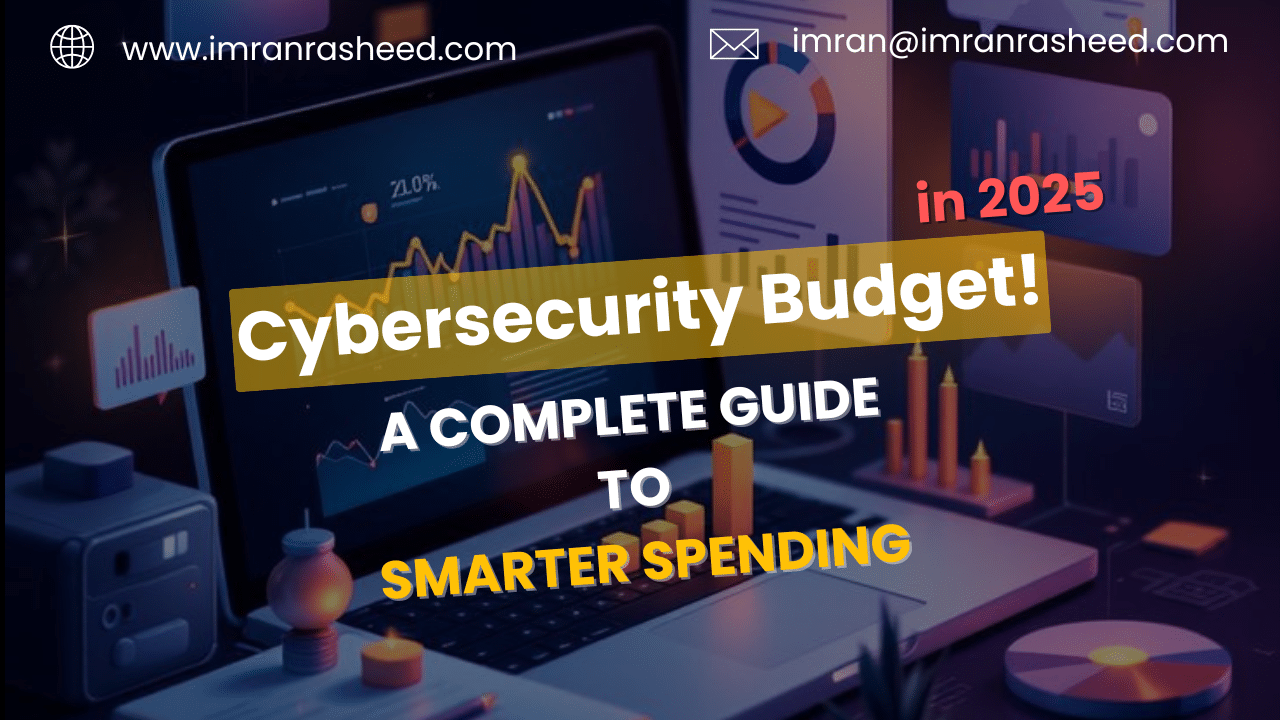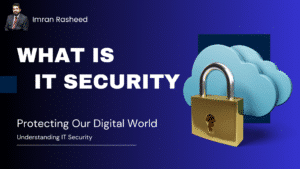
In 2025’s threat landscape, is your cybersecurity budget actually ready? If you’ve landed on this page, you care about security. The bad news is that the people trying to break into your systems care even more. Last year, billions of records were exposed worldwide. We can debate the exact tally later, but the practical question remains: how do you budget so you protect what matters without wasting money?
I’ve helped startups and large organisations frame security budgets that are pragmatic and defensible. This article gives a clear cybersecurity budget breakdown and practical tips so you can prioritise spend, protect critical assets, and respond when things go wrong.
Understanding the Cybersecurity Landscape in 2025
Cyber threats are changing fast. Attackers use AI, target supply chains, and exploit human weaknesses with ever more convincing social engineering. At the same time, regulators are tightening rules from GDPR to financial sector mandates and new AI governance proposals, so compliance is now a budget driver, not an afterthought.
A few realities to keep front of mind
- Geopolitical friction increases the chance of nation-state or state-sponsored activity
- AI is amplifying both defensive and offensive capabilities, raising attack volume and sophistication
- Cloud and multi-cloud complexity make misconfigurations a persistent risk
- Social engineering remains the dominant vector in many breaches
Bottom line: your budget must fund both prevention and resilience. You need controls, people, and plans.
Assessing Your Organization’s Cybersecurity Needs
Budgeting starts with a clear assessment of what you own and what would hurt if it were lost or disrupted.
Business size and complexity
Smaller teams often do more with less and should prioritise essentials: endpoint protection, multi-factor authentication, backups, and basic logging. Larger organisations must plan for scale: identity management, network segmentation, and secure architecture for hybrid environments.
Current tools and workforce capabilities
Inventory what you have and how well you use it. I regularly find companies paying for expensive platforms that sit idle because they lack the processes or skills to operate them. Before buying anything new, consider whether reallocating existing spend toward training or process improvement would yield bigger gains.
Determining risk profile
Not all assets are equal. Map your critical systems and data, score them by impact and likelihood, and budget to protect the top tier first. Use a simple risk equation, likelihood times impact, and let that drive prioritisation.
Cybersecurity Budgets by Industry

- Technology: 13.3%
- Healthcare: 13.3%
- Business services: 13.2%
- Consumer goods and Services: 9.7%
- Financial services: 9.6%
- Manufacturing: 6.1%
- Retail: 6.0%
Ensuring Product Security and Data Protection
Compliance and regulatory alignment
Regulations force spending. Gap assessments, remediation, logging, retention, encryption, and audits cost money. Treat compliance budgets as investments: certifications and documented controls can unlock customers and reduce insurance premiums. Start with a targeted gap assessment to identify high-value fixes.
Integrating security into core operations
Security must be part of how you build and run products. Budget for secure design reviews, SAST and DAST, software composition analysis, routine penetration testing, and runtime protections like WAF and IAM. Crucially, fund developer enablement, secure coding workshops and developer tooling. Fixing a bug in production costs many times more than fixing it in development.
Protect the data lifecycle. Budget for classification, encryption or tokenization when needed, and retention policies that match both regulatory and business needs.
Cybersecurity Budgets by Industry
How much companies spend varies by sector and risk profile. Regulated industries like finance and healthcare spend more because the cost of data loss and non-compliance is higher. Recent reports highlight that cybersecurity remains the top risk for European banks as heightened geopolitics increase the perceived threat of cyber incidents. Startups spend leaner, focusing on core protections and scaling investment with revenue.
Trends I see
- Spending is shifting to recurring services: MDR, continuous compliance, threat intelligence
- Organisations are investing more in prevention and automation rather than just hiring incident teams after the fact
- Outsourcing security functions to MSSPs is common for smaller teams to gain enterprise capability
Use industry benchmarks as a reference, not a rule. Prioritise what protects your revenue, customers, and operational continuity.
Developing a Comprehensive Budget Strategy
Create clear buckets and defend each number with risk evidence. I break budgets into a few practical areas and ask for proof of impact for every line item.
Software and hardware investments
Include licensing, integration, maintenance, and lifecycle replacement. Recurring detection and response subscriptions often outperform one-off hardware purchases because threats evolve.
Internal teams versus outsourcing
Hire for strategy and governance. Outsource for scale and 24/7 operations where hiring is impractical. A hybrid model often gives the best value: keep a security lead in-house, outsource monitoring and specialised services.
Training and awareness programs
People are often the weakest link. Fund continuous phishing simulations, role-specific training, and secure coding education. Even modest recurring investment here reduces incident rates significantly.
Compliance and risk management
Budget for gap assessments, audits, policy work, and remediation. Use frameworks like NIST or ISO 27001 to prioritise spend and communicate needs to the board. Keep a contingency for sudden regulatory changes or audit findings.
Incident response planning
Plan for containment and recovery: forensics tools, legal retainers, PR, customer notification, and tabletop exercises. Pre-contracted external partners will save you time and money during a breach.
Maximizing ROI from Your Cybersecurity Spend
Think signal, not noise. Focus on controls that reduce real business risk.
Focusing on high-impact assets
Protect what would break the business. Prioritise systems with customer data, revenue impact, or regulatory exposure. Simple scoring helps you fund the right controls first.
Automating security operations
Automation reduces cost and speeds response. SOAR, automated patching, and tuned alert pipelines shrink manual workload. Expect an upfront engineering effort, but the operational savings and faster containment pay off.
Avoiding low-return investments
Don’t buy shiny tools because they look impressive. Ask whether a purchase reduces the likelihood of a high-impact event and whether your team can use it effectively. I’ve retired redundant tooling and redirected funds to hygiene, training, or MDR with better outcomes.
Implementing and Monitoring Your Budget Plan
You need metrics, governance, and adaptability.
Tracking KPIs and spending efficiency
Measure time to detect, time to respond, number of successful phishing attempts, and compliance gaps closed. Use cost-benefit analysis for major initiatives and adjust mid-year if priorities shift.
Using a GRC framework for oversight
Adopt an authoritative framework, test controls against ATT&CK-style scenarios, and keep documentation tidy. A clear GRC approach helps justify budgets to execs and auditors.
Preparing for unexpected expenses
Keep a buffer. Cyber insurance helps, but read policies closely. Resilience is ongoing: continuous testing, incident readiness, and staff training are not optional.
Future Trends in Cybersecurity Budgeting
AI and automation will reshape both attacks and defences. Expect budgets to move toward predictive and adaptive models that fund continuous monitoring, posture management, and data-centric protections. We will also see more spending on preventing supply chain attacks and securing AI pipelines.
Read more: Can AI Replace Cybersecurity Jobs ?
Conclusion
Security budgets in 2025 must be pragmatic, evidence-driven, and flexible. Align spending with risk, prioritise high-impact controls, invest in people and automation, and plan for the unexpected. Do that, and you turn cybersecurity from a cost line into a business enabler protecting revenue, customers, and reputation.
FAQ’s
How can businesses balance cybersecurity needs with budget constraints?
I prioritise risks: protect high-impact assets first, automate where possible, outsource ops, and reallocate from low-value tools. Do less, but do it well.
How to calculate ROI and justify your cybersecurity budget?
Estimate expected loss reduction (likelihood × impact), compare against control cost. Show avoided downtime, fines, and brand damage, those numbers sell budgets.
What should a cybersecurity budget proposal include?
Short exec summary, risk map, line-item costs (tools, people, training), KPIs, timeline, compliance needs, and a contingency for incidents or regulatory change.
What should a cybersecurity budget proposal include?
Short exec summary, risk map, line-item costs (tools, people, training), KPIs, timeline, compliance needs, and a contingency for incidents or regulatory change.
What portion of the overall IT budget should be invested in cybersecurity?
Typically 5–15% of IT spend; regulated sectors often exceed that. Startups skew lower but should scale quickly as risk and revenue grow.
What kind of budget do you need for cybersecurity technology?
Cover essentials: endpoint, IAM/MFA, backups, logging, and MDR/SOAR subscriptions. Include licenses, integration, maintenance, and refresh cycles, plan for recurring costs.





